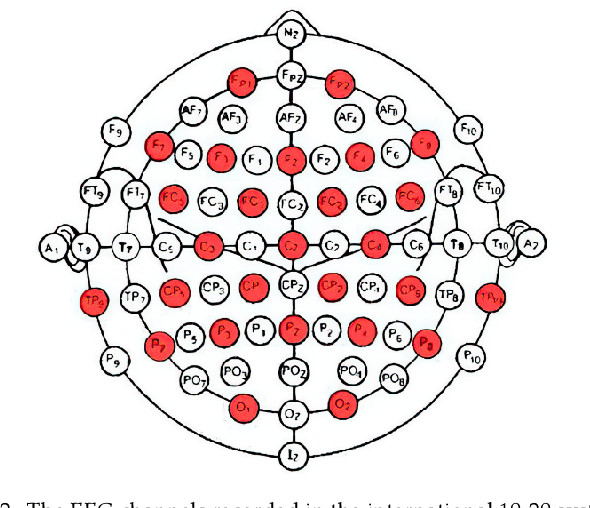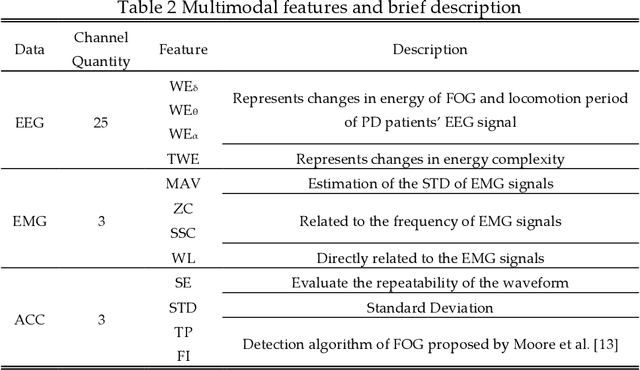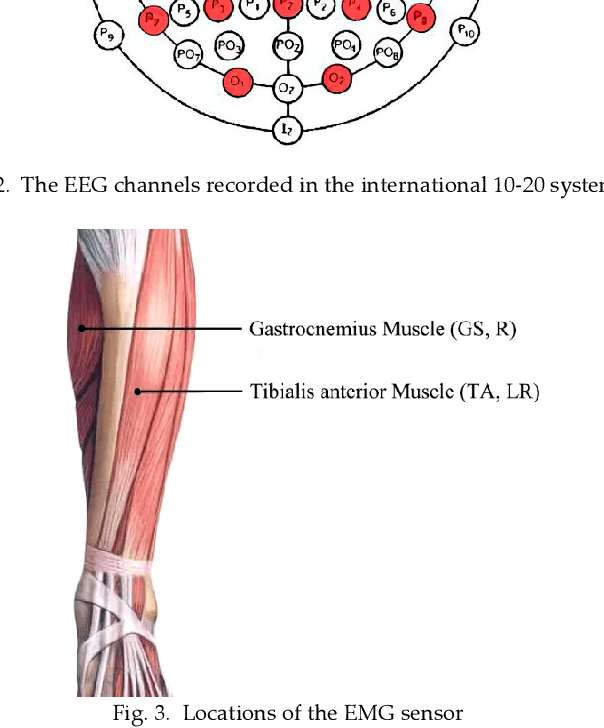Sensoring and Application of Multimodal Data for the Detection of Freezing of Gait in Parkinson's Disease
Paper and Code
Oct 09, 2021



The accurate and reliable detection or prediction of freezing of gaits (FOG) is important for fall prevention in Parkinson's Disease (PD) and studying the physiological transitions during the occurrence of FOG. Integrating both commercial and self-designed sensors, a protocal has been designed to acquire multimodal physical and physiological information during FOG, including gait acceleration (ACC), electroencephalogram (EEG), electromyogram (EMG), and skin conductance (SC). Two tasks were designed to trigger FOG, including gait initiation failure and FOG during walking. A total number of 12 PD patients completed the experiments and produced a total length of 3 hours and 42 minutes of valid data. The FOG episodes were labeled by two qualified physicians. Each unimodal data and combinations have been used to detect FOG. Results showed that multimodal data benefit the detection of FOG. Among unimodal data, EEG had better discriminative ability than ACC and EMG. However, the acquisition of EEG are more complicated. Multimodal motional and electrophysiological data can also be used to study the physiological transition process during the occurrence of FOG and provide personalised interventions.
 Add to Chrome
Add to Chrome Add to Firefox
Add to Firefox Add to Edge
Add to Edge